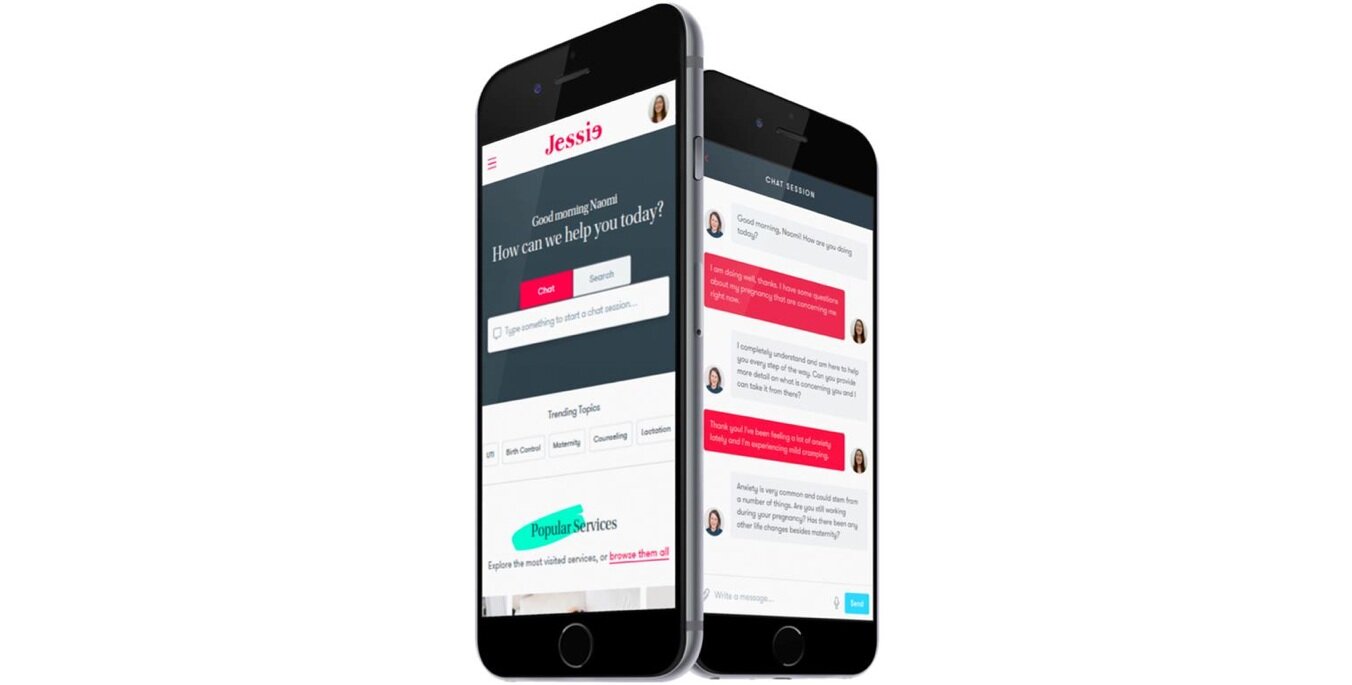HITLAB Women’s Health Tech Challenge 2019 Finalist Cultivates Virtual Care Platform
Industry: Healthcare
Meet HITLAB Women's Health Tech Challenge Innovators: Jessie
New York, NY (PRUnderground) July 7th, 2020
After competing as a finalist in HITLAB’s Women’s Health Tech Challenge last May, Jessie launched a unique platform that allows women to easily find and compare virtual care services for themselves and their families. Jessie delivers the largest network of vetted virtual care vendors, doctors, and services for medical advice, prescriptions, and labs at more affordable prices than the cost of a copay or deductible.
In the United States, women make 80 percent of healthcare decisions for the family, but the medical field still lacks equal in-person health services for women. In 2018, Jessie’s founders Amy Domangue and Kerranna Williamson saw an opportunity to use the emerging virtual care market to solve this inequality that women still face in medical care.
Domangue and Williamson were originally passionate about building out marketplaces, so when they saw that there was a gap in in-person services for women’s health, they thought the emerging virtual care field was an interesting way of filling it.
“Because of increased risk factors like pregnancy, most women were left out of clinical trials from 1977 to 1994… by consequence, women were also left out of consideration when it came to how our bodies would respond to important treatments for a wide range of conditions including high blood pressure, depression and chronic pain,” Domangue said. “That has recently changed. Treatments and services are evolving to where there is more equality and parity, meaning that we can better meet the distinct needs of both men and women. The goal of the Jessie platform is to make individuals more aware that these options exist and help them gain access.”
Currently, Jessie is focused on providing users with access to health services that require a licensed provider. In the future, they will consider adding additional health services that do not require provider intervention.
Every virtual care vendor on the Jessie platform has been vetted by the company to make sure they have a compliant and follow the guidelines of the state in which they operate in. The company also uses each service themselves to ensure it is truly beneficial for their users.
“It’s important for something like Jessie to exist to make the end users better consumers of virtual care. It is not an easy space for consumers to navigate on their own,” Domangue said. “There’s been a massive onslaught on services, so it is very difficult for a regular user to distinguish which service will best meet their needs.”
Last year, Jessie was a finalist in HITLAB’s 2019 Women’s Health Tech Challenge centered around the growing women’s health tech industry. The company received third place and the Women’s Health Tech Impact Award presented by HTD. When Jessie pitched at the Challenge, Jessie was in the pre-product stage and focusing on raising capital and getting people excited about their ideas.
According to Domangue, the most beneficial aspect of the event was the networking opportunities. They were able to grow and strengthen their network and they still keep in touch with some of the innovators they met through the Challenge.
“Overall, one thing that we both got out of it is that we met so many wonderful leaders in femtech,” Domangue said.
After the Challenge, the Jessie team worked with HTD to build out their platform, which allowed them to provide proof of concept to potential stakeholders. HTD assisted them in creating their current app and the teams are still in collaboration to build out their next version of the platform.
“HTD Health was formed to bring human-centered design and technology to healthcare, an industry that has been slow to digitally transform,” HTD Director of Research Elise Mortensen said. “Our best work comes from partnerships with companies like Jessie that are dedicated to building a seamless, trustworthy, and empowering digital health experience. It’s exciting to see a platform built with the unique needs and pain points of women in mind that can also improve access to quality care for a broad audience of users across gender identities.”
After Jessie launched on January 1, they wanted to see how many users would be able to find the platform on their own, so they did not promote it. However, with the rise of the COVID-19, they saw the number of people on their website dramatically increase.
“Even though we were trying to stay under the radar, people started finding us,” Domangue said. “COVID-19 pushed us forward.”
To adapt to this increase in traffic, Jessie built out a COVID-19 assessment tool to help patients find out if they need virtual care and navigate to the best provider for them. The company also plans on launching a more comprehensive version of their platform by the end of the summer.
Many people believe that the COVID-19 crisis will push forward telehealth services, but Domangue believes that for Jessie, this boost will occur on the back end, after consumers realize how much they paid for their virtual care services through their traditional provider.
“Once users receive their explanation of benefits in the mail for their virtual care visits, people are going to want to find out if there are cheaper alternatives,” Domangue said. “I think what you’re going to see is not only people starting to use virtual care for their primary care, but eventually we’re going to see people using virtual care for specialized services as well,” Domangue said. “Patients are going to get to the point where they realize they don’t see a difference in value between what they get from a virtual versus a physical visit.”
In the future, Jessie’s goals are to make sure people understand what a quality virtual care experience is and help them recognize how the Jessie platform can be used to compare multiple vendors.
The company hopes to become more than a referral tool by working as a platform that allows patients to manage their information from all of the different vendors that they use.
Looking back at her experience with Jessie, Domangue noted that the biggest lesson she’s learned is that patients will get a higher quality conversation with their provider through virtual care. Many patients believe that since they spend more time at the doctor’s office when they go for an in-person appointment they are being better served, but in reality, there are just more distractions and less one-on-one time with their doctors.
“You have an idea of what virtual care would feel and look like, but it’s not until you experince it first-hand that you realize the convenience of getting treated from the comfort of your own home.”
To learn about other emerging innovations and leaders in the field of women’s health tech, join HITLAB’s Women’s Health Tech Initiative and play a role in advancing the revolutionary world of femtech.
Contact – Justin Bulova at jbulova@hitlab.org
About HITLAB
HITLAB is an impact-first organization that offers digital health research, teaching, and advisory services to improve health delivery around the world.
At HITLAB, we believe technology and health can work together to improve the quality of health delivery and healthcare worldwide. We use rigorous research and evidence-based methods to identify the best digital health solutions for each of our partners.





